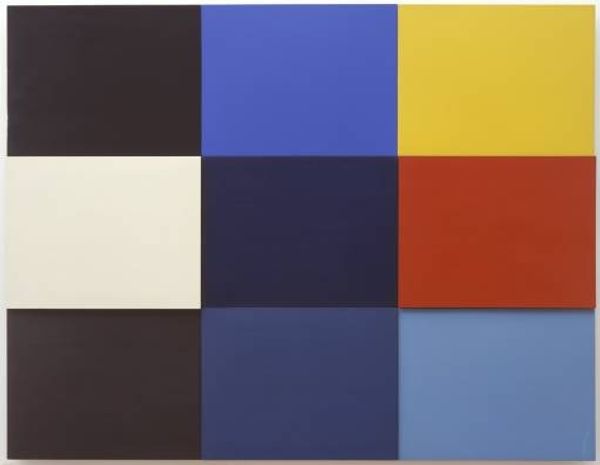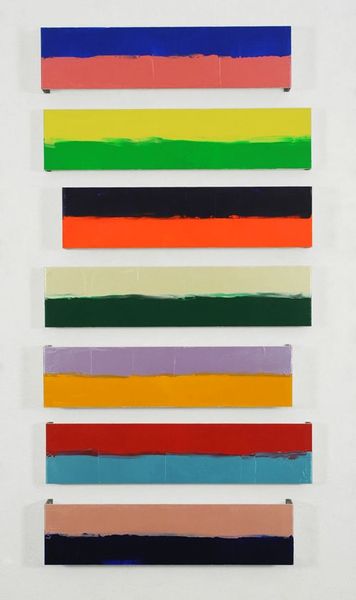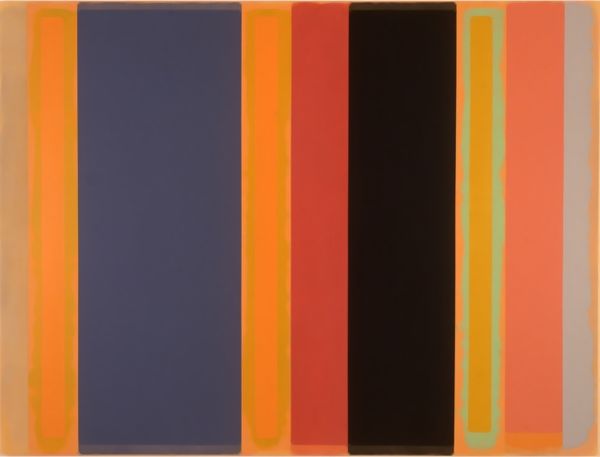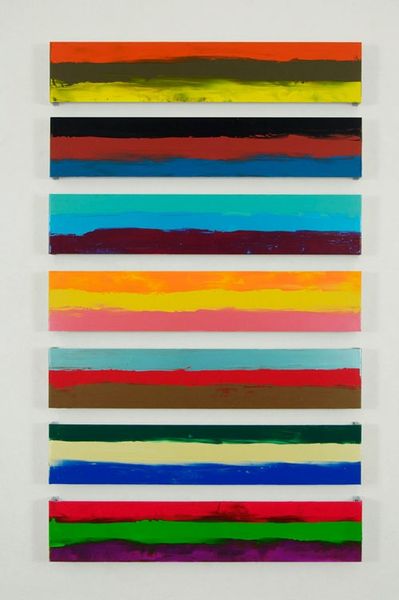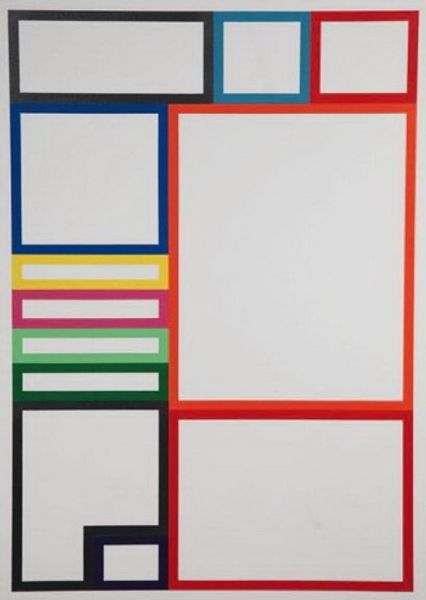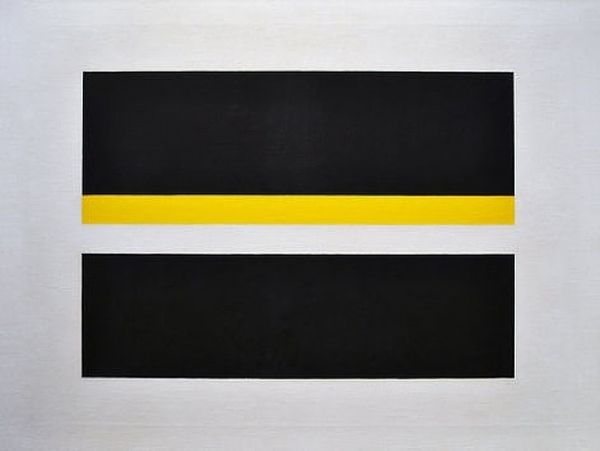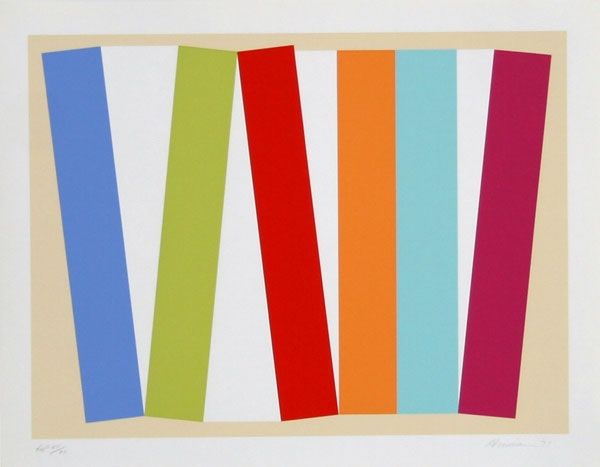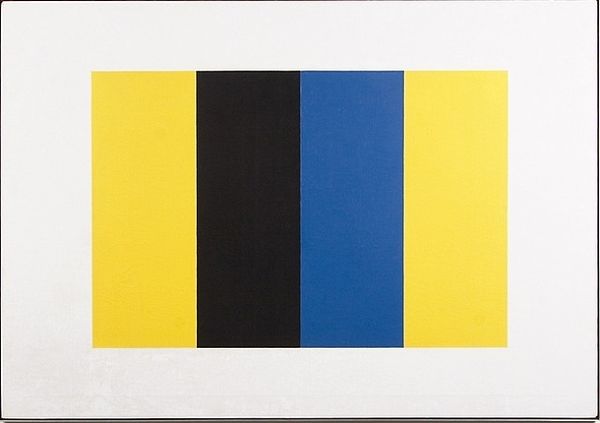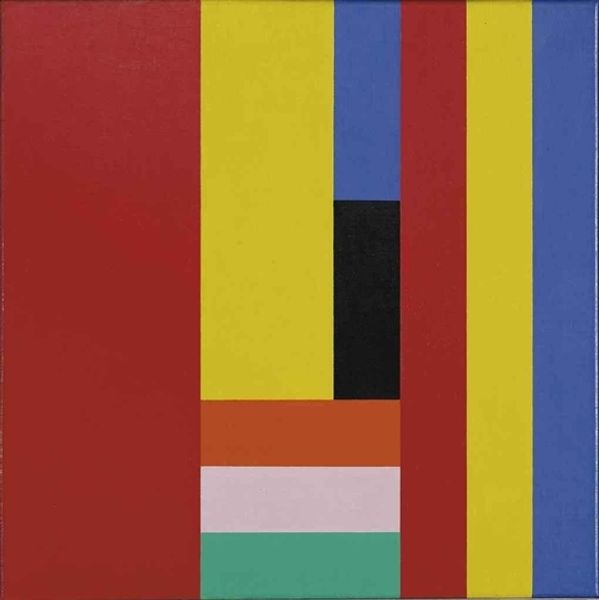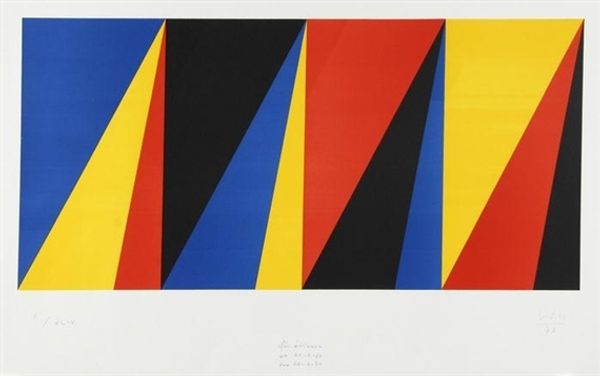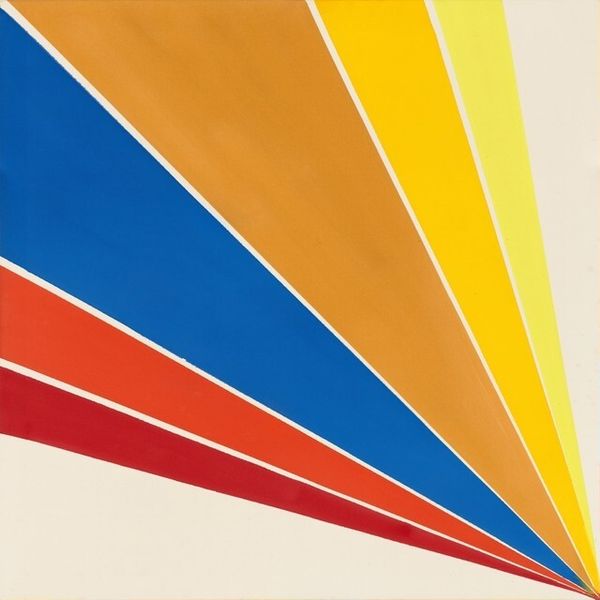
#
minimalism
#
op art
#
pop art
#
colour-field-painting
#
geometric pattern
#
geometric
#
abstraction
#
pop-art
#
line
#
hard-edge-painting
#
orange
Copyright: Charlotte Posenenske,Fair Use
Curator: This is Charlotte Posenenske's "Striped Picture" from 1965. Editor: Immediately, it feels almost like a musical score—stark, a bit cold, yet promising a harmony. Like someone scribbled lines on a blank paper to structure ideas before notes. Curator: Posenenske was a fascinating figure working in a period when Minimalism and Pop Art were exploding onto the scene, and you can see echoes of both in this piece. She was deeply concerned with art's social function, how it circulates and impacts the public sphere. Editor: "Social function"— that sounds, I don’t know, functional! And here I am, struck by the simple arrangement, the interplay between the stark white ground and these bright horizontal color bars that seems so deliberately impersonal. But at the same time the way those stripes disrupt the blank space activates everything in the composition and, ironically, humanizes the painting, right? Curator: Precisely! Posenenske’s stripes aren't merely decorative. She saw industrial processes as a potential democratizing force in art and this painting is part of her engagement in challenging the notions of authorship and authenticity. In a sense, it looks like product design sketches for colors of automobiles for that period. Editor: Yes! And there is this wonderful flatness and boldness that echoes industrial processes—so much like something ready for mass production—and I almost imagine she meant these paintings to serve a similar purpose to, say, color charts in factories to test if an automated machine has completed its task correctly! Curator: That relates perfectly with how Posenenske felt about commercialization. She sought to create an art which was "demonstrably objective," freeing her works from bourgeois artistic standards. But paradoxically the cool impersonality, also created these powerful affects when one viewed the work in galleries or museum environments. Editor: I wonder how Charlotte would see how we’re reacting to this now. The fact we can muse about something she was hoping could challenge those very traditional environments where art has a stronghold… The very fact we are viewing it here and debating those things is the best outcome any artist could hope. Curator: Indeed, by creating these “objective” artworks Charlotte's main mission in life, whether acknowledged as that or not, may have been to democratize art—make it open to all viewers. Editor: Which circles us back to where we began—how its stark harmony strikes a surprisingly human chord!
Comments
No comments
Be the first to comment and join the conversation on the ultimate creative platform.
